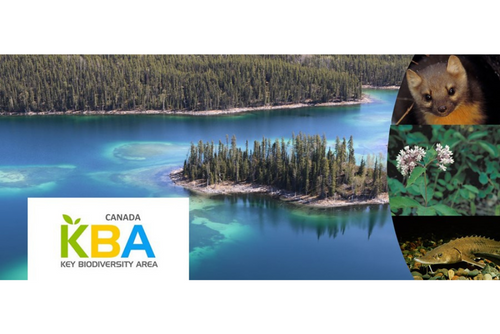
As we close in on the end of 2020, the KBA initiative continues to expand. Teams are working in Atlantic Canada, Quebec, the Prairies (identifying pilot sites and ecosystem criteria KBAs), British Columbia (applying species and ecosystem criteria in this province), Yukon, Northwest Territories (identifying pilot sites). In addition, we are finalizing freshwater KBAs across the country for review, and honing in on the methods to identify KBAs under Criterion C (these are sites of at least 10,000 km2 with the highest ecological integrity and will be identified in northern ecosystems, two per ecoregion are allowed). We still have geographic gaps that we need to fill, but have high hopes for beginning work in remaining regions in 2021.
We held our second KBA Webinar, which explored technical processes used in identifying Key Biodiversity Areas in Canada. You can find a recording of the webinar HERE. We will continue to offer KBA webinars in the coming months, to share a broad range of projects and regional initiatives that reflect unique aspects of KBA work.
Save the date for the next webinar in our series:
Title: IBAs and KBAs in Canada: Bridging the Gap for Birds
Date and time: December 10, 2020 at 12pm ET
Description: Andrew Couturier, Senior Director, Landscape Science and Conservation with Birds Canada will discuss the relationship between Important Bird and Biodiversity Areas (IBAs) and KBAs in Canada. In the late 1990s, Birds Canada led a comprehensive process to identify IBAs, resulting in 600 sites, roughly half of which have stewardship groups working at them to conserve birds and habitats. The KBA approach (modelled heavily on the successful IBA program) aims to consolidate IBAs and other existing approaches for identifying important biodiversity sites under one framework. This presentation will showcase progress to date on the cross-walk of IBAs to the KBA Standard, share lessons learned, and illustrate some of the challenges of the work. Next steps are discussed with respect to integration of data on birds and other biodiversity, and also continuing the conservation work of IBAs under the new KBA umbrella.
Link to join: https://bit.ly/KBAwebinar3
As always, please get in touch if you have questions or if you want to learn more.
Ciara Raudsepp-Hearne
Canada Key Biodiversity Areas Coordinator / Coordonnatrice Zones Clés pour la Biodiversité